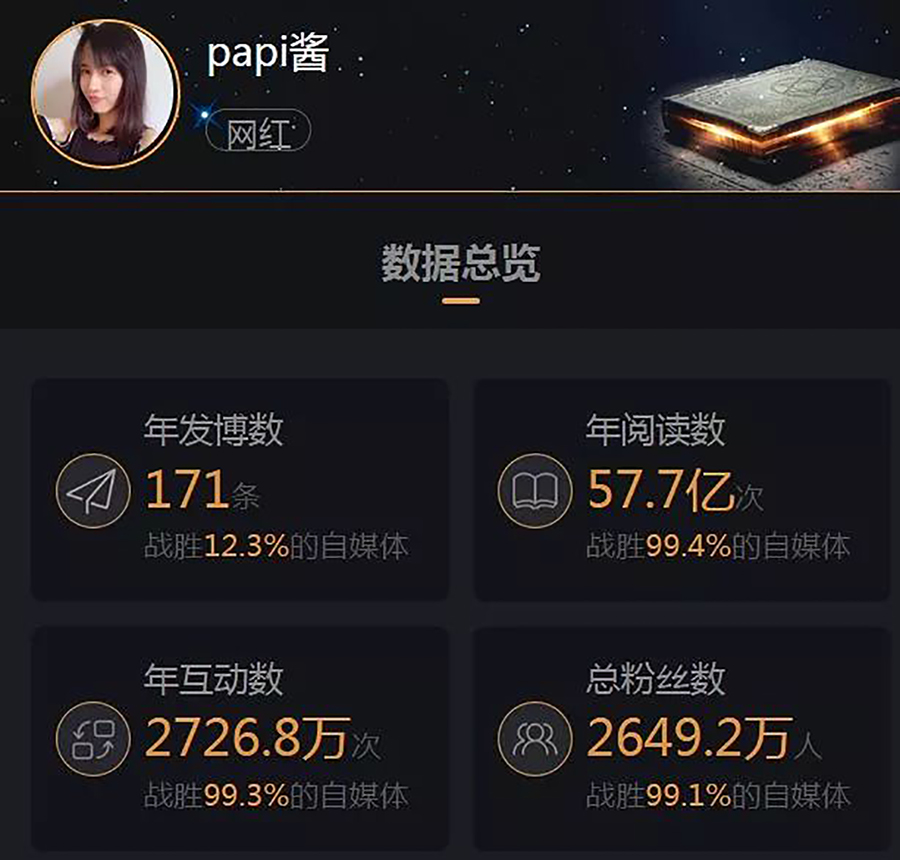We-media is a term coined by American student named Shayne Bowman and Chris Willis, in which defines the utilization of real-time communication platforms in China by the general public to build impact. Using the advanced technology to broadcast on platforms with consistent quality content to attract subscribers and followers. The increase of the subscriber population on a platform is followed by the usage and influence of the platform, along with the rise of value.
We-media in China
Companied by the tremendous usage of internet, We media in China is changing the game. From the popularity of personal blogs in 2005 to the trending of Weibo in 2009, to the launch of WeChat Official Account (WOA) in 2012, to the streaming trend in 2017, to the short video boom in 2017. The changes in We-media is contributed by the bloggers whom begun accumulating a large group of followers in Weibo, later expanding into the WeChat platform.

*Above graph defines the important contributing events to we-media since 2008 to present. 2009 Weibo establishment; 2012 WeChat Official Account establishment; 2012 – 2014 Video, e-commerce have stepped into we-media; 2015 – 2017 streaming and short video are the popular content for creators
With WeChat official account occupying 63.4% of the media market share in the digital era, the amount of funds circulating in WeChat official account have attracted a large crowd to participate. In this year, WeChat Official Account have reached 17.7 million accounts with a annual growth rate of 32.1% in comparison to 2015. In 2017, the numbers have surpassed 20 million. Since beta testing in 2012 up till now, with over 6 years of development, the market size of Wechat Official Account is now valued at over hundreds of billion dollars.
As the second largest distribution channel, Weibo occupies 19.3% of the market, should also be taken into consideration. As of December 2017, the monthly active users (MAU) for Weibo have increased to 3.92 billion, which have increased by 7.9 million from 2016, breaking the record for the highest net growth since listing. For instance, the number one internet influencer in China, Papi-chan have published 171 posts with an annual view of 57.7 billion averaging 3.3 million per posts and the highest views is 1.4 billion.

From 2012 to the end of 2015 marks the highest profiting period for We media in China , content values have skyrocketed.
However, after various concepts and ideas being done in 2017, have the We media industry entered the stage of regression or stabilization? We have used the PEST analysis method to bring everyone into a new perspective for the We media development in China.
P (Politics)
The prospect of We media in China have been one-of-a-kind phenomenon in the market.
Prior to the digital era, traditional media often requires skill sets and requirements. Skills, such as writing, was also highly competitive and encouraged to be improved.
However, since the popularization of We media platforms, everyone is able showcase their thoughts and opinions with a keyboard and webcams without being in the first scene. Any opinions that unique and keen will be often receive attention.

Under the current circumstances, content quality fall through the loopholes of view buying, plagiarism, false news and various shortcuts to gain impressions, leading into the regression and downgrade of content quality. In this digital era, the lack of supervision has been a huge contributing factor for the low-quality and falsification in We media. Thus, the building for accountable and reputable content have been one of the pressing challenges.
With the strengthening of management and supervision by the Judicial administrative department of China and mainstream platforms, such as WeChat and Weibo, the new policies released have reorganized the activities for We media platforms, along with the dismissal of many verified influencers failed to display rightful activities. The supervision department of China have also been in discussion with the management of multiple We media platforms to rectify entirely. From this period, the intervention by the government have sped up the elimination and selection between superiority and inferiority to continuously improve the
Through the logics of leading entrepreneurs abusing the name of Wang Jian Lin to publish false information causing its lawsuit by the we-media influencer Ma Dong Yang pled guilty, the we-media culture in China have progressed to be more civilized with copyright and legal distribution.

We-media creators should be wary of the policies and regulations of content if they wish to progress in this field under the supervisions on the internet.
E (Economy)
The insane hype is not restricted to internet users, but also investors, as we-media have also lived up to its popularity in the early stages for investments.
The year of 2015 is known as the year of we-media finance, there are over 30 we-media finalizing on finance plans over millions. Between may 2016 to may 2017, there are over 66we-media channels with millions of funding, and 9 with over billions.
We-media channels with funding have analyzed the aspects necessary to increase the chance to receive financial funding. One aspect is the expertise, for instance, the representative for vehicle media channel is “After the car”. The other aspect is the management experience of the creator. Examples are Yi Tiao, created by Xu Hu Sheng who was previously the chief editor for “Bundpic”, or the creator of Luogic show by Luo Zhen Yu whom was previously the producer of “Dialogue”.
Since the early stages and rapid development of we-media, the capital market has slowly normalized in 2017.
We-media is still receiving attention from the capital market, but there is a growing trend towards the leading media. In 2017, 75% of the financial funding in the we-media sector have been redirected to the leading we-media, including short videos, tools, MCN, media agencies, service platforms, and content platforms. These companies and platforms have become the most highly financed parties. Comics, maternal content, childcare, cars, life, relationships, finance and womanism have become more concentrated in the we-media field.
When knowledge and finance are brought together into a field, competition and elimination is guaranteed. We-media with informational and entertainment compared with popular accounts or accounts with large fanbase, these accounts receive higher attention and value from investors. For instance, in December of 2017, 36 Yang have received first round financing of 3 billion RMB, becoming the largest financial plan for we-media in China.
Looking at the prospect from the past several years, the hype for we-media creators have past. The industry is coming close to a turnover, and we-media with specific brand or field are most likely to continue to receive attention within the market.
S (Society)
The beginning of we-media has overridden the usage of traditional media and affecting the reporters, starting to decentralize the media industry. Giving users and an average person the ability to create and share, where everyone can produce content and become a we-media creator.
According to the statistics by Net Ease Technology, we-media creators have increased tremendously since the start of 2014, surpassing 2 million by 2015. And, in 2017, there are now 2.6 million creators.
Despite the growth of we-media, the numbers of creators in the industry with consistent content production and advertising after two years of selection and elimination, remains at 8.3% growth.
Especially after the innovative concepts of media platforms in 2018, the industry have now begun to build a standard for high-quality content, leading content creators to shift to content production team to release consistent and high-quality content. An example would be Mimeng, the drafting process for her viral articles are based on the following procedures: select a topic from 50 options, interviews, 5 hours of interactive writing, 100 headlines, create a poll within the group of 500, and lastly to complete an 10,000-word data analysis of the article. This process displays the benefits and advantages of a production team.

Aside from that, we-media have birthed many business model, but the profit model remains singular.
According to the “We-media trend report of 2017”, sponsorship is the main income for we-media creators to 59.8% of the data. Matured commercial plans include platform commission, e-commerce, and IP monetization which occurs less frequently and only on the mainstream we-media creators. To majority of we-media creators, sponsorship is the main profit, or possibly the only.

*Above graph is the distribution of financial funding plan in we-media of 2017
As the development of we-media starts to stabilize, the standards for management and content will rise to test we-media creators and the expertise of the team. To professionalize, systemize we-media of content production, campaign planning, monetization and management model will be the core of the competition for we-media in the near future.
T (Technology)
Following the rapid development of internet and demands of consumers, we-media industry have displayed innovative technology.
Looking at the production of content, images have been the main production for content in the early stages until the trend for streaming, short videos and other contents. Specifically in 2017, the popularization of short video was one of the phenomenon in the industry.

Taking a look at we-media platforms, forums and blogs have shifted to WeChat and Weibo, Toutiao as the representative for information platforms shifting to Douyin, Kuaishou and other short video platforms. The numbers of we-media platform surges, as well as the optimization of algorithm to improve the platforms. As the internet giants join the competition for we-media platforms, many platforms have begun to throw its money in to create the gaps. Now we-media platforms have slowly begun to form a structure, and content traffic will be even more competitive than before.
As the distribution tools, smart phones are the first tool used by many users to receive first-hand information. The circulation of video content and technology have now progressed, AR/VR technology are leading the development teams and the industry to proceed. Under the large data technology, new media content such as short video, H5, VR streaming, GIFs have sped up the demands for innovativeness of the users, highlighting the interaction between users and the content or information.
Conclusion
The low standards for we-media have provided the public with a voice, one of the benefits contributed by the development of the internet. In comparison to the followers and trafficking in the early stages, we-media in China have entered a stabilized development stage for maturation to perfect the ecosystem. In 2018, the industry is progressing towards the demands for high-quality content and the influence of leading creators with businesses. The survivability to sustain within this industry will continue to decrease, decided by the direction of development and the continuous improvements.
Keep yourself on top of what's happening in China
Studies, guides, news and other digest of China delivered right to your inbox.
No Charge. Unsubscribe anytime.





